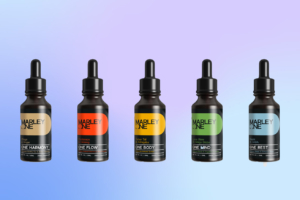
There is growing evidence that ketamine may be able to treat complex regional pain syndrome (CRPS), a rare and debilitating condition that currently has no approved medication for treatment.
The United States Food and Drug Administration (FDA) has granted psychedelic biotechnology company PharmaTher orphan drug designation for ketamine in the treatment of CRPS. The FDA can grant orphan status to drugs or biological products that show promise in treating a rare disease or condition, which the regulatory body defines as a disease affecting fewer than 200,000 people in the United States.
CRPS is a chronic pain and inflammatory condition that occurs following an injury to a limb such as an arm, leg, hand, or foot, commonly resulting from fractures, surgery, sprains, strains, and limb immobilization. The condition accounts for approximately 1.2% of the adult chronic pain population, and it can be acute or chronic, lasting longer than six months. Symptoms include excessive or prolonged pain, changes in skin color or texture, changes in temperature, swelling near the site of the injury, abnormal hair and nail growth, and excess bone growth. In severe cases, CRPS can be disabling, with a 2014 study showing that 75% of patients with CRPS had a high risk for suicide.
Because there is no approved medication specifically for the treatment of CRPS, the condition is currently treated with a range of drugs and therapies, such as over-the-counter or prescription pain relievers (including opioid medications), steroids, bone-loss medications, physical therapy, and electrical stimulation.
There is growing clinical proof that ketamine can be used to treat neuropathic pain, such as CRPS. Ketamine is an NMDA receptor agonist meaning it can act as an anesthetic agent on this nerve cell receptor, which is responsible for a wide range of neurological functions, including breathing, locomotion, learning, memory formation, and neuroplasticity. The drug can essentially block this receptor from firing, which can in turn decrease pain.
A 2018 meta-analysis on the efficacy of ketamine infusion in the treatment of CRPS concluded that ketamine led to decreased pain for study participants. “The immediate pain relief event rate was 69%,” researchers said. “The pain relief event rate at the one to three months follow-ups was 58%. Our findings suggest that ketamine infusion can provide clinically effective pain relief in the short-term for less than three months.”
However, researchers noted further studies were needed to evaluate the treatment’s long-term efficacy.
PharmaTher announced today that it expects to begin a Phase 2 clinical study using its propriety cGMP ketamine product for CRPS in 2022. This is the company’s second ketamine-based product to be granted FDA orphan drug designation. Earlier this year, the company was granted the designation for ketamine to treat the rare neurological disease Amyotrophic Lateral Sclerosis (ALS), also known as Lou Gehrig’s disease.
PharmaTher CEO Fabio Chianelli said: “Receiving our second FDA orphan drug designation with ketamine for CRPS continues our momentum in building a specialty ketamine-based product pipeline for not only mental health disorders, but also for rare and near-rare conditions present in neurological, pain, and inflammatory disorders.”





